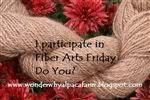Susan Cooke Kittredge, senior minister at the Old Meeting House, Vermont (daughter of Alistair Cook, whose “LETTER FROM AMERICA” was the longest-running commentary series in history.) Excerpted from “We ALL NEED MENDING” on THIS I BELIEVE, aired on National Public Radio in February, 2008, I would like to copy her writing here because I believe it to be valuable.
After reading through Kittredge's thoughts, I am posting a picture of my favorite work shirt which has been mended over many times with old linens. Each vintage piece incorporates beautiful embroidery work done many years ago by women whom I will never having the privilege of knowing.
by Susan Kittredge, taken from
National Public Radio:
Like most women of her generation, my grandmother, whom I called Nonie, was an excellent seamstress. Born in 1879 in Galveston, Texas, she made most of her own clothes. Widowed at 43 and forced to count every penny, she sewed her three daughters' clothes and some of their children's, as well. I can knit but I cannot sew new creations from tissue-paper patterns. Whenever I try, I break out in a sweat and tear the paper. It clearly requires more patience, more math, more exactitude than I seem willing or capable of giving.
Recently, though, I have come to relish the moments when I sit down and, somewhat clumsily, repair a torn shirt, hem a skirt, patch a pair of jeans, and I realize that I believe in mending. The solace and comfort I feel when I pick up my needle and thread clearly exceeds the mere rescue of a piece of clothing. It is a time to stop, a time to quit running around trying to make figurative ends meet; it is a chance to sew actual rips together. I can't stop the war in Iraq,
I can't reverse global warming, I can't solve the problems of my community or the world, but I can mend things at hand. I can darn a pair of socks. Accomplishing small tasks, in this case saving something that might otherwise have been thrown away, is satisfying and, perhaps, even inspiring.
Mending something is different from fixing it. Fixing it suggests that evidence of the problem will disappear. I see mending as a preservation of history and a proclamation of hope. When we mend broken relationships, we realize that we're better together than apart, and perhaps even stronger for the rip and the repair.
When Nonie was 78 and living alone in a small apartment in New Jersey, a man smashed the window of her bedroom where she lay sleeping and raped her. It was so horrific, as any rape is, that even in our pretty open, highly verbal family, no one mentioned it. I didn't learn about it for almost five years. What I did notice, though, was that Nonie stopped sewing new clothes. All she did was to mend anything she could get her hands on as though she could somehow soothe the wound, piece back together her broken heart, soul and body by making sure that nothing appeared unraveled or undone as she had been.
Mending doesn't say, "This never happened." It says instead, as I believe the Christian cross does, "Something or someone was surely broken here, but with God's grace it will rise to new life." So too my old pajamas, the fence around the garden, the friendship torn by misunderstanding, a country being ripped apart by economic and social inequity and a global divide of enormous proportions — they all need mending.
I'm starting with the pajamas.
Each time I mend, I think of Susan Cooke Kittredge and her thoughtful commentary.
This is my work shirt that is in a constant state of "mending", because each time the shirt is washed, some of the vintage embroidery work frays. Those torn pieces are covered over with newer pieces of linens, be it hankies, pieces of antique tablecloths or napkins or even old table runners.
Just like the repairing of this shirt, I believe we are in a continual state of mending over wounds, be it in the loss of expectations or ways in which we have disappointed others and ourselves.
It is something to think about.









 Aunt Mary George made me this Bible cover back in the 60's when I married my children's father. As you can see, I could not bear to discard it. Perhaps it can be repurposed for another wedding years later, if the bride cares to use it as a "something old, something new, something borrowed, something blue" sentiment to be carried for the ceremony.
Aunt Mary George made me this Bible cover back in the 60's when I married my children's father. As you can see, I could not bear to discard it. Perhaps it can be repurposed for another wedding years later, if the bride cares to use it as a "something old, something new, something borrowed, something blue" sentiment to be carried for the ceremony.

















 Again, the
Again, the 
























